Amalgam Fillings contain 50% mercury
If you see metal fillings in your teeth, that means at some point you had a cavity that your dentist filled in with amalgam. Most dentists only use metal free composite (white filling material) now. But it used to be very common to fill all teeth with amalgam, especially molar teeth. Now days people do not like to see silver in their mouths. And many people are concerned about the mercury in amalgam cavities being harmful to their health.
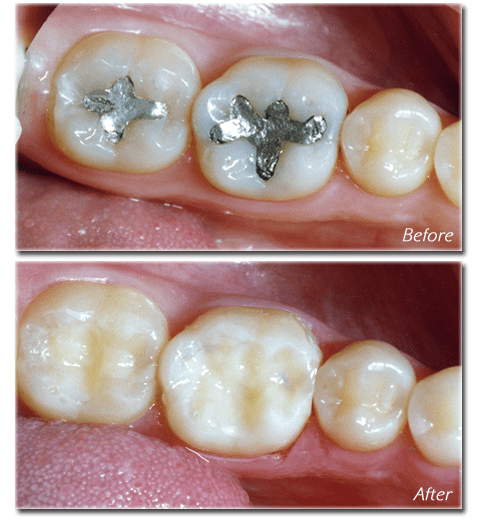
Mercury in fillings should be removed safely
If you want amalgam fillings removed, you’re not alone. Many people visit our holistic dental practice to have their mercury removed. The safest way to remove mercury from the mouth, is to get it all out in one visit under IV sedation. Removing all your amalgam fillings at once, limits exposure to mercury during amalgam removal to just one occasion. That way you will only be exposed once and you can start detoxing any heavy metals built up in your system right away.
Are you scared of the dentist? No problem! We cater to cowards and we will never pre-judge you for any reason. We offer different levels of sedation dentistry, including laughing gas (nitrous oxide) and being to totally put to sleep for any dental work. No matter what your anxiety level is, we will make sure you have a calm and comfortable experience.
Dr. Hal Huggins advocated sequential amalgam removal or removal of all amalgam fillings under IV sedation dentistry. Dr. Huggins believed removing all the amalgam at one time limited mercury removal to one visit. He also believed the electronics and magnetics of the metals in the different fillings should be removed all at one time under sedation to have the smallest impact on the nervous system.
How to Remove Amalgam Safely Video
Who is Maryland Sedation Dentist (MSD)?
MSD is a certified holistic dental facility offering safe dental materials and biocompatible implants. Our modern facility is also certified for full IV sedation and the Huggins-Grube protocol. We use a holistic approach to many of our procedures including the IAOMT SMART mercury removal.
Is Amalgam Filling Material Safe?
While the ADA does not recognize amalgam as a hazardous material, many patients, through self education, have made the decision that they prefer not to have the material in their mouth. Amalgam is 50% mercury by weight and that is concerning. We believe it’s important for patients to understand the advantages and disadvantages of amalgam and composite fillings, so they can make an educated decision that they feel is best for them. We encourage patients to ask questions, do their own research, and make a well informed decision.
Amalgam Needs to Be Removed in a Safe Manner
If you have amalgam fillings removed and replaced, the dentist needs to do it in a safe manner. Amalgam fillings contain 50% mercury, and patients should be protected from mercury exposure during the removal process. We follow the IAOMT protocol for safe mercury filling removal. Also called SMART for safe mercury amalgam removal technique. In layman’s terms, we feel it’s important to protect both the patient and staff from mercury exposure. And we follow the IAOMT specific safety measures. From using special barriers in your mouth to keeping you from swallowing mercury, to using a special high powered vacuum to eliminate toxic vapors. We take protecting our patients and staff very seriously.
What to Expect During Initial Consultation
The first step to getting your metal fillings removed and replaced is to come in for a consultation. During this consultation you will meet with the dentist who will examine your mercury fillings and answer any questions you have about the removal and replacement process. After your consultation, one of our patient coordinators will go over your treatment plan which includes recommended procedures, our fees, what portion we’re estimating insurance will cover, and financing options. We offer financing for all dental procedures through Care Credit and Lending Club.
What is the IAOMT SMART Protocol?
- Metal filling material cut out in large sections – with larger pieces, it is less likely they will become ingested or spray/splatter all over the place. Simply put, removing amalgam in large pieces decreases the potential negative effects of the mercury found in amalgam.
- Cool Water Irrigation –drilling mercury can produce friction and heat. The use of water spray in large amounts can keep heat lower and slow the release of gas from the mercury filling. Also small mercury dust particles will not be released into the air but instead will be captured in the water which can then be easily suctioned.
- Efficient air filtration and suctioning– powerful filtration and suction removes gas vapors and slurry of filling material that is released during the filling removal process.
- Protective barriers – rubber dams help in preventing mercury filling particles from being inhaled or swallowed by isolating the dental treatment area from the mouth and stopping procedure matter and filling particles from being ingested. Without using a dam, amalgam particles will be sprayed in the mouth. While drilling out fillings, particles fly out at high rates of speed and can get embedded into soft tissue in the mouth.
- Protect exposed skin – surgical drapes can protect skin and clothing from becoming contaminated.
- Alternate Air Supply – to prevent breathing contaminated air full of mercury gas and amalgam splatter, oxygen, in combination with nitrous oxide can be provided.
- Filtration – professional air purification systems are positioned near the work field during filling removal. These systems have filters with charcoal that remove mercury gas vapors from the air and preserve healthy air quality in the office.
- Watch where it goes – In order to protect the environment, it’s important that mercury waste be properly stored and disposed of. Amalgam waste with mercury must be specially filtered out. We follow the standards set forth by OSHA, Montgomery County, and WSSC.
Cosmetic Concerns
In a world that is becoming increasingly cosmetically concerned, many patients are looking to have nice white, bright, smiles. Most people would prefer to have their teeth all white vs seeing shiny metal fillings when they laugh.
Before and After Amalgam Removal Photo
Recurrent Decay
Many people don’t realize that fillings don’t last forever. Like old paint on a house can peel away and cause wood to rot, old fillings over time can come loose and the teeth may begin to rot under these loose fillings. When you go in for regular cleanings and exams, your dentist should examine fillings to ensure they are properly sealed and secure. On average, a well-placed filling will last 5-15 years. Oftentimes when we remove amalgam fillings, we find recurrent decay.
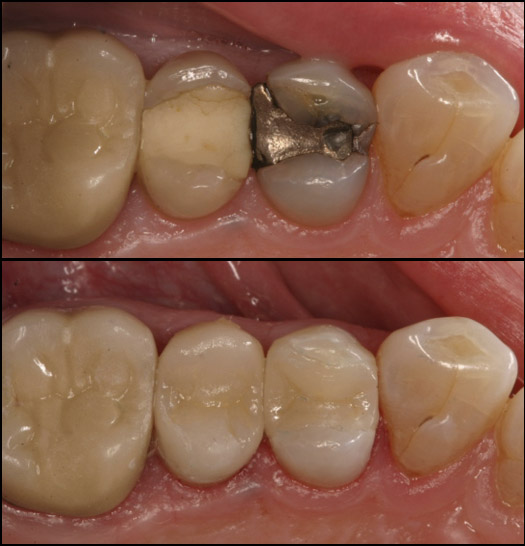
All Composites Are Not Created Equal
We use a porcelain filling material made by Admira Fusion. Although more expensive than the majority of available composites, it’s more biocompatible and durable. It’s important when removing and replacing amalgam fillings, you find out what replacement material your dentist is using. Some resin composites contain BPA’s and other unsafe chemicals.
Who Offers Tooth-Colored Fillings
Most dental offices offer composite fillings because the majority of patients request them for aesthetic reasons. However, some dentists continue to use amalgam filling material for insurance reasons or because they feel it is a better material. It is important before having any filling or crown done, to check with your dentist to see what material they will be using.
Replacing Amalgam Fillings With Crowns
In general, you can replace an amalgam filling with a composite filling if at least 50% of the tooth structure remains after removing the amalgam material and any tooth decay that may be present. If less than 50% of the tooth structure remains, then your tooth may need a dental crown. A crown is a protective layer that is shaped just like your tooth and covers your entire tooth. When you come in for your consultation, the dentist will let you know if they believe any of your amalgam replacements will need a crown.
Advantages and Disadvantages of Removing Mercury Fillings
Color
Metal amalgam fillings are very noticeable in the mouth. White composite fillings are not noticeable because they blend in with the tooth color.
Decay/Caries
Caries (cavities) and decay is a concern for teeth with amalgam. Fillings with amalgam are known for cracks and/or fissures where bacteria can form. Bacteria can cause infection and turn into decay if cracks/fissures are not caught right away. Ceramic fillings are not as prone to fissures and cracks, therefore the decay risk is not as great.
Cost
Amalgam fillings do cost less than porcelain fillings. Many insurance companies will cover more of the cost of a metal filling. Patients will often go with the silver filling option, since their out-of-pocket expense will be less.
When replacing these amalgam fillings with ceramic fillings, it can become quite costly depending on how many you are replacing. Especially for patients who have amalgam fillings which are in good repair, they may find the cost of the procedure may not outweigh the benefit for them.
Problems with Removing Amalgam Fillings with Mercury
No dental procedure is without risks and potential complications. Sometimes during an amalgam removal procedure, the recurrent decay can be unexpectedly deep, necessitating either a root canal or extraction and implant in that area. Such complications add additional time and expense. Sometimes larger mercury fillings need crowns. And even smaller ones can have cracks under the metal fillings.
Tooth Strength
Porcelain/Ceramic fillings preserve tooth strength more than silver amalgam fillings because of the chemical bond it has to the tooth. With a strong bond, patients will likely experience less future recurrent decay and cavities.
Mercury and Metal Filling Corrosion
Amalgam fillings are made of metal, which causes a corrosion risk. Corrosion happens over time, and is a reason patients need to have fillings redone. Ceramic, white-colored fillings don’t have that risk. They are porcelain, and this material does not corrode.
Sensitivity and Chewing Comfort
Many patients state after receiving amalgam fillings, that they have discomfort when chewing. They may have to return to their dentist to have their metal filling adjusted to relieve their chewing issues. Adjustments like this are not as common for ceramic fillings, as the way it adheres to the tooth is different.
Ready to Make the Switch?
When you need a filling, just ask your dentist for a ceramic, tooth-colored, white, or porcelain filling. They will know what you mean and will likely tell you insurance will not cover as much, leaving you with a higher out-of-pocket expense.
If you have amalgam fillings, you can get all of them replaced if you would like. Not every dentist will replace metal fillings. The replacement process requires safety measures due to mercury dust and gas that floats in the area during removal. It’s important that you choose a dentist with experience in safely removing amalgam fillings. This includes producing minimal debris, having speciality protective equipment for patients and staff, and making sure there is proper air filtration and ventilation. At MSD, we follow a special protocol by the IAOMT organization. Once all of the amalgam has been safely and thoroughly removed, you then would have a ceramic filling placed by the same process as if it were the first filling you were getting in that tooth.
Does Dental Insurance Pay for Amalgam Removal?
Most dental insurance companies will pay at the same rate they would pay for a regular filling. Most offices who safely remove amalgam will have additional fees for the extra time and equipment needed for the safe removal. This part of the cost is not a covered benefit under dental insurance.
Most dental insurances will cover 30-80% of the cost for amalgam filling removal and replacement up to the plans annual maximum benefit. Most dental plans have annual maximums of $1000-$3000. After the maximum has been reached, patients will be responsible for the 100% of the fees. During your initial consultation, we will review your plan benefits and give you an estimate of what portion of the procedure your insurance will cover.
Who will contact your insurance company and determine how your insurance works in our dental office.
How Much Does Amalgam Removal Cost?
The fee for amalgam removal is roughly $495-$725 depending on the size of the filling, plus $50 per tooth for amalgam removal, and $200 per quadrant that we are doing dental work in for the extra time and material we use for the safely protocol we follow to while performing our procedure. Teeth with large amalgam filling and recurrent decay may require a crown for replacement which would be an additional fee. All of our amalgam removal dentists are trained and certified by the IAOMT in safe removal protocol.
Contact Us for Amalgam Filling Replacement
We offer ceramic, tooth-colored filling replacements. We follow the IAOMT protocol for safe amalgam removal. You can be assured, we limit your mercury exposure as much as possible throughout the process. We will do everything we can to educate patients about the pros and cons of all dental procedures so you can make informed decisions that are right for you. If you have any questions or would like to schedule an appointment for a consultation, please contact us. We are always happy to help you!
Pretreatment and Detox after Amalgam Removal
We recommend natural and simple techniques before going to any drug based techniques. You should always check with your medical doctor before performing any detox protocols.
Activated Charcoal
Activated charcoal can be given as a pre-treatment. It is a binding agent for mercury and heavy metals. If mercury gets into your digestive tract, it can bond onto the charcoal and go through the digestive system instead of getting stuck on digestive walls in your body.
Liposomal Vitamin C
Vitamin C has a lot of benefits. The main one being it boosts your body’s ability to repair itself. The liposomal delivery method (under the tongue) allows it to enter into the bloodstream directly. We recommend a liposomal vitamin c regimen one week prior to amalgam removal and 3 weeks post operatively.
Liposomal Glutathione
Glutathione, a natural supplement, can assist cells in moving mercury out of the cell and into your bloodstream where it can be removed during urination. Glutathione should only be taken after amalgam removal as you do not want to increase the amount of heavy metals in your blood stream until you have removed all of your mercury fillings.
This site uses Akismet to reduce spam. Learn how your comment data is processed.
RECENT POSTS
Request An Appointment
Error: Contact form not found.
 2918 Spencerville Rd, #124Burtonsville, MD 20866
2918 Spencerville Rd, #124Burtonsville, MD 20866  (301) 421 1118
(301) 421 1118 
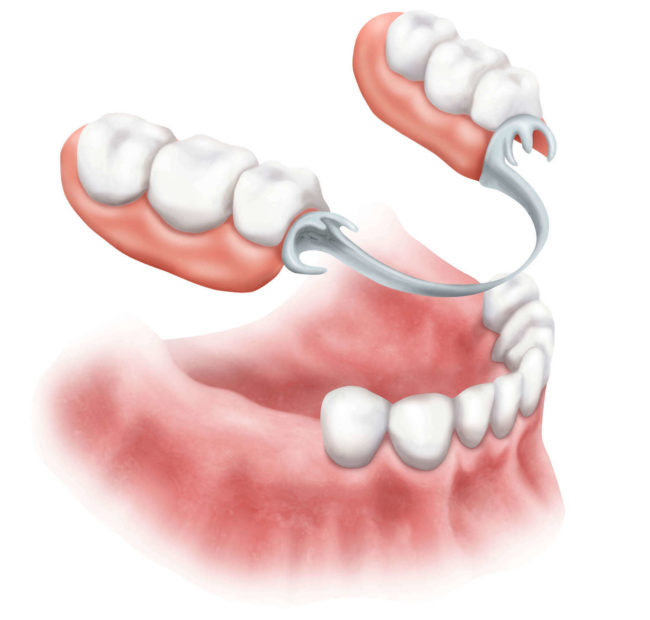
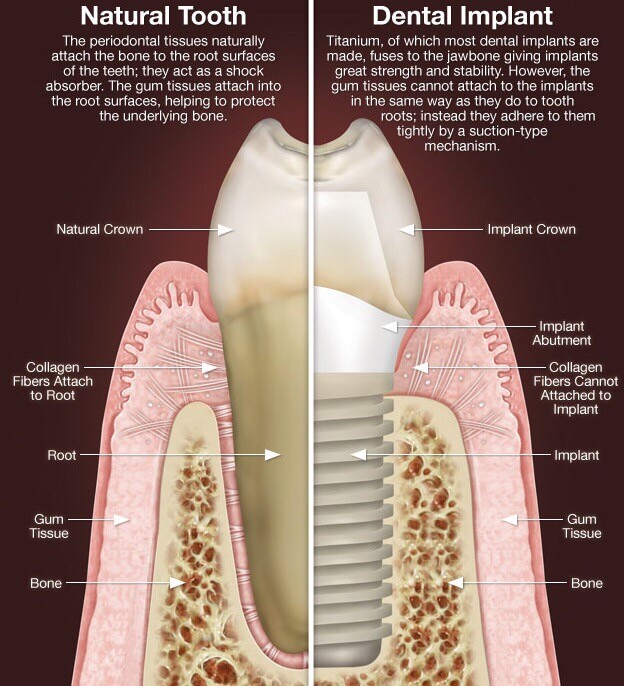
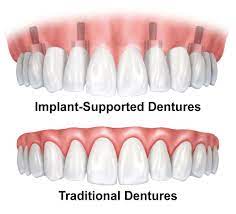

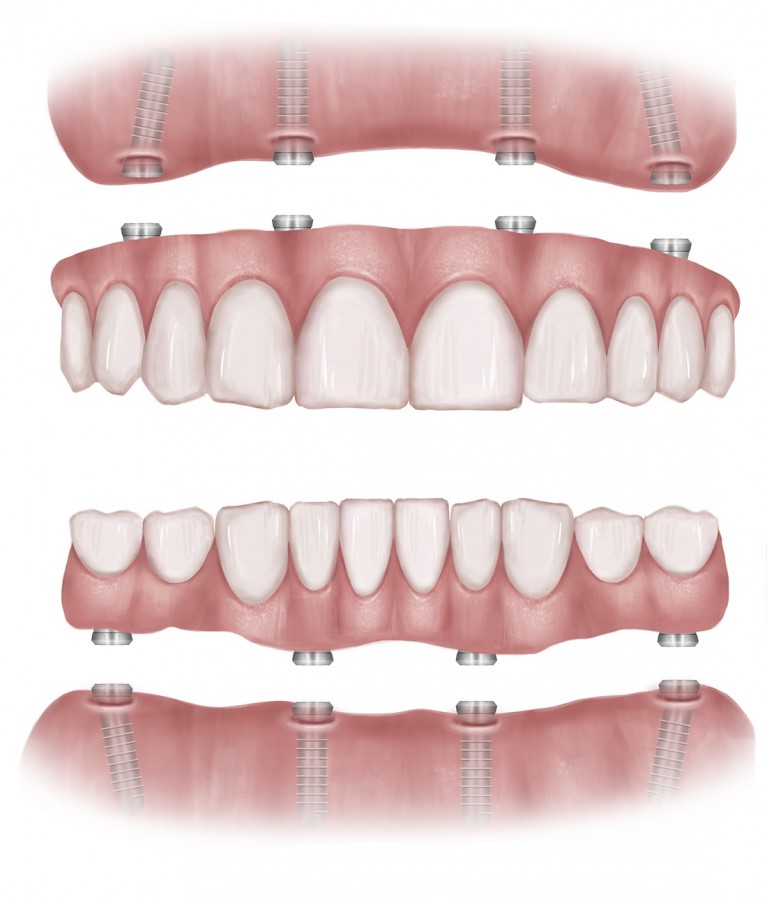
0 Comments
No comments yet. Be the first to comment!